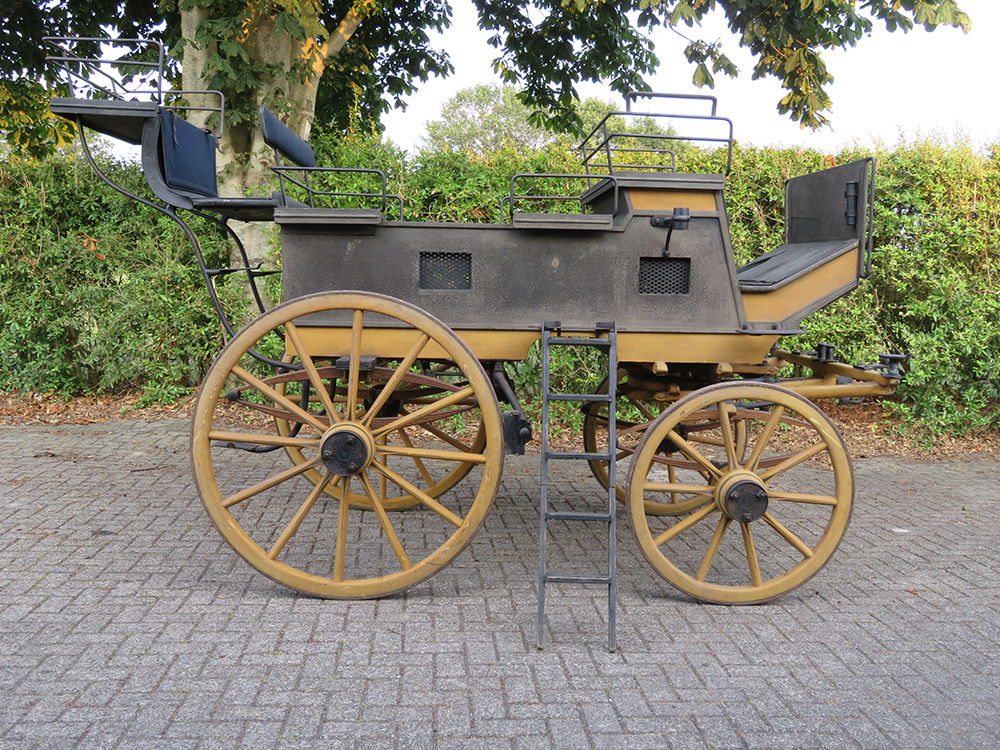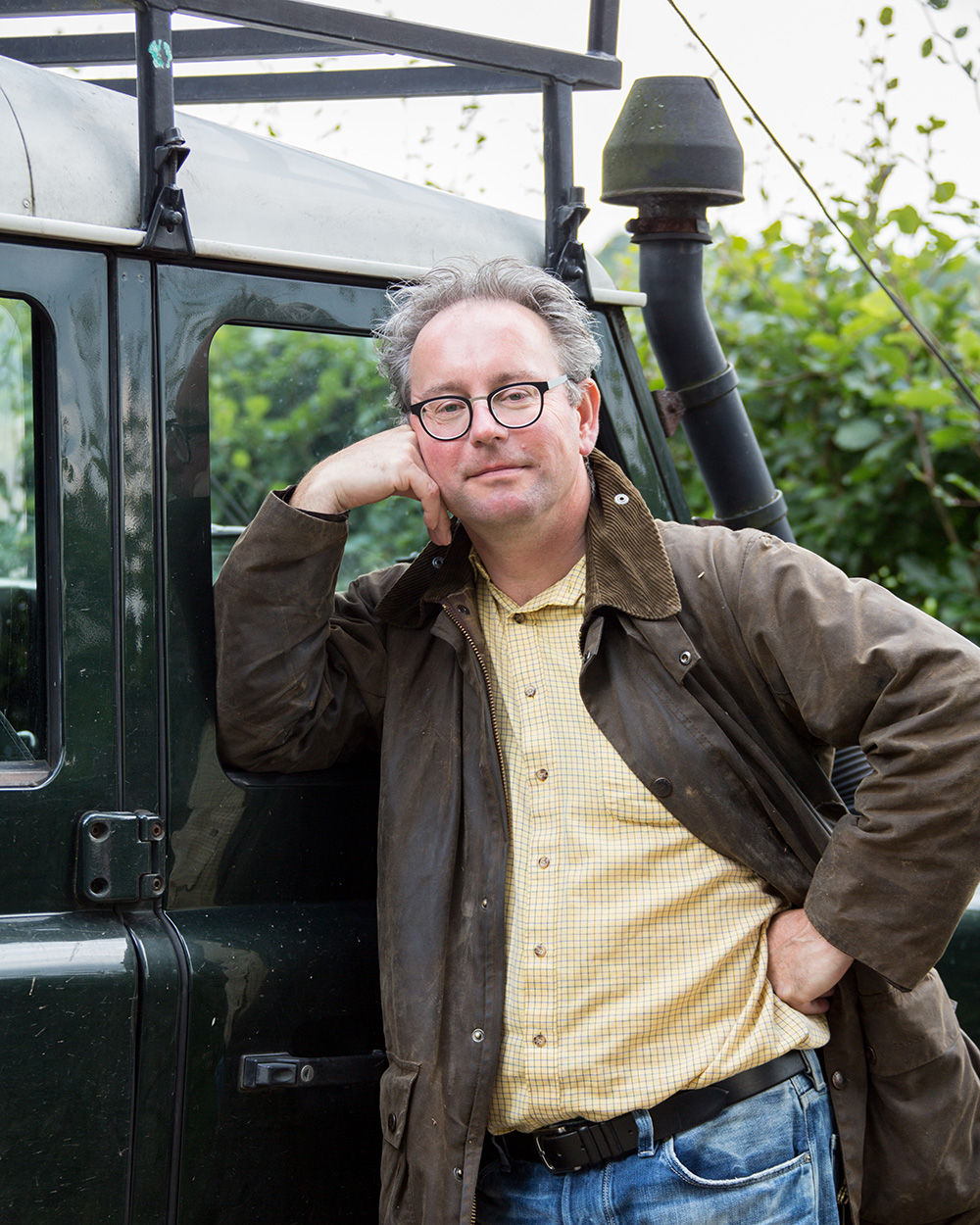Pillow problems
Carriage project | Yacht break part 1
By: Mario Broekhuis
After the start last week of Castle de Haar's carriage project, things are still relatively quiet at the restoration center in Balkbrug. The three carriages have been unloaded. Restorer Maria Stolk: "We had fixed the Grand Duc's flaking paint before transport, otherwise the finely painted family crests would certainly have been lost." She now has particular questions about the missing cushions on the yachtbreak, the first carriage to be addressed. Were they soft cushions or did the passengers sit on an upholstered wooden frame?


The yacht break was built by Mühlbacher in Paris, at the end of the 19th century the oldest carriage manufacturer in Paris and most authoritative for the entire world. This break is not the only one made there; it was a standard model that the wealthy clientele could have customized as they wished. For example, the Van Zuylen van Nijevelt family wanted an extra elevated servant's bench at the back and a foot brake, the pedal of which is foldable. "Yet every time you ask yourself, what is original and how did it come about?" asks Maria Stolk as she doubts the foot brake by stitching in a trap. She looks at it like a true detective. Crime Scene Investigation in Balkbrug. "It is also quite possible that a standard upholstery was made and this was changed later, still in the factory. And look at the servant's bench, when the car is full it hangs quite a bit through its springs, is that right?" These are the eternal doubts that consume much of her time. Yet she cannot help but observe. To determine which cushions belong on it, there are old photos, showing soft cushions. "But those wobble up a bit, that couldn't have been delivered that way by a quality builder, could it? Hence we had already started working on wooden frames, but it turns out that is not original after all." Worldwide, about seven of these Mühlbacher yachtbreaks remain. In Argentina, France and the Netherlands. One in Belgium appears to still have its original cushions. Of woven cloth. Possibly this could be the model for the upholstery of the break of De Haar. Project leader Claas Conijn will make the decision in the near future. He explains a bit more, why it is so important that De Haar Castle is putting so much effort into three nother French carriages. "There is, apart from the Royal Stable Department, virtually no castle or country estate anymore where such an impressive collection of carriages has remained together and certainly not in this quality." It is a monumental ensemble. And by "quality," Conijn is not just referring to the manufacturer's name, especially to the fact that the carriages are still in old condition. "Even if the paint is peeling off and those seat cushions are gone, the fact that we still have the old layers of paint and fabrics is very valuable, with that we can also pass on those materials and techniques to future generations." And for that reason alone, Maria Stolk does not opt for a few random cushions and a nice piece of fabric from the market.

Mario Broekhuis (51), a stewardship graduate, feels completely at home at a historic country estate like De Haar. Moreover, he knows alesson of carriagesand can tell wonderful stories about it. That is why Mario gives us a monthly update on the progress of the restoration of three carriages for De Haar on this page. The three carriages in this project come from the management of Borg and Nationaal Rijtuigmuseum Nienoord and are transferred to long-term loan by Castle de Haar. This project has been made possible by VZW Pater Davids, Prins Bernhard Cultuurfonds, VSBfonds, Stichting Bonhomme Tielens and Stichting kasteel de Haar. The Hippomobile Heritage Foundation is supervising the implementation and providing communication.
